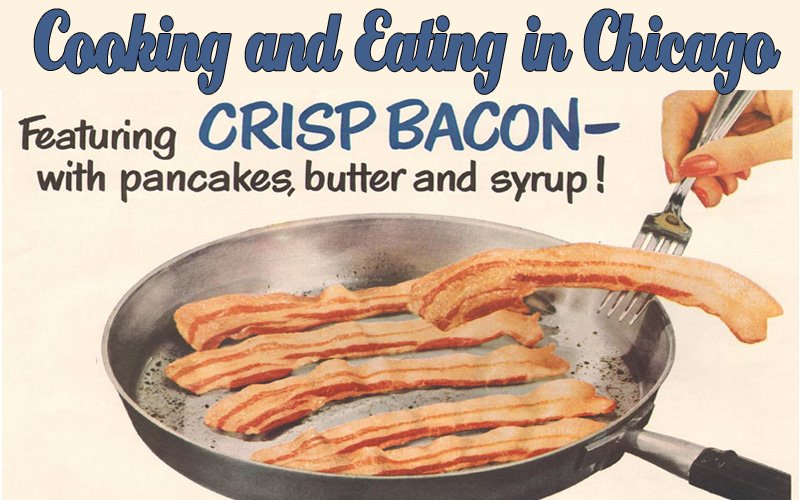
Butter is the perennial MVP of food and cooking. One mention of it and everyone rolls their eyes skyward and makes their best food orgasm face. But how do most home cooks use butter?
Restaurants use butter in a lot of ways where it's not all that evident. Fish and meats are basted in sizzling butter while they're cooking, delicate proteins like lobster are poached in it, compound butters are allowed to melt over meat while it rests, and beurre monté is used all over the place.
In Thomas Keller's 1999 classic, The French Laundry Cookbook
At the French Laundry, we use an awful lot of butter without actually serving a lot of butter, because of our reliance on the substance called beurre monté. We cook in it, rest meats in it, make sauces with it. It's an extraordinary vehicle for both heat and flavor. Butter in its solid state is an emulsification of butter fat, milk solids, and water. If you melt butter, these three components separate, but beurre monté--a few drops of water and chunks of butter whisked over moderate heat--is a method of melting butter while maintaining the emulsification.That's the trick. Melting the butter without allowing it to separate.
And that's why most home cooks don't make butter sauces or use butter to it's full effect.
Which is a shame. Because it's not difficult to do what Keller talks about on a much smaller, much simpler scale.
But why? Is getting more butter or fat into what we cook some kind of lofty goal? No, of course not. But making the food that we cook taste better is. And that's what butter--when used properly--does.
"Fat equals flavor" is an often-uttered foodie catchphrase, but it's inaccurate. Fat, on its own, has very little flavor at all. Taste a neutral oil like canola or safflower and see for yourself--it's all fat, but there's no flavor there at all.
A more precise turn of phrase would be "fat carries flavor". Sure, it adds it's own qualities--the flavor notes present in the type of fat you choose, the richness that the fat brings to the equation--but what it mostly does is allow whatever flavors are already present in the dish to linger longer on the tongue and the taste buds. The fat coats the tongue and the interior of the mouth, causing the food being eaten to be tasted longer, which results in a perception of more flavor.
So, fat carries flavor, amplifies it. And butter does so even more than just about any type of fat due to the fact that it's already in a state of emulsification, as Keller explains in the quote above. Butter, in its emulsified liquid state, has a lush, creamy mouth feel that serves to call attention to everything else in its presence, beyond adding the actual flavor of the butter itself. Melted or clarified butter, by contrast, carries the flavor of butter, but it doesn't bring that creamy, unctuous texture to the party.
So that's the justification for using butter in certain situations where you might not otherwise think to use it. Now, I'm not saying that you should drown whatever you're cooking in butter; it's not necessary to do so to take advantage of butter's unique flavor-enhancing qualities. A little goes a long way.
And it's also not necessary to learn how to make butter sauces, although it's not like they're all that difficult to make. But they can be finicky and a bit tricky to hold--too much heat and they separate, if they get too cold, they'll coagulate and then separate. Using a coffee thermos
I make'em once in a while, but what I do more often is finish with butter. It's basically the same thing as making a butter sauce, but you're just utilizing whatever liquid happens to be in the dish rather than using a separate pan to make your sauce. And all that's required is to simply leave whatever you're cooking a little looser or more saucy than you normally would, and then toss in a few pieces of cut-up whole butter after you pull the pan off the heat.
Now, to be clear, this is not the same as using beurre monté, referenced above. Finishing with butter is referred to in French as monter au beurre--mounting with butter--something I've found to be much more useful and accessible to do on a regular basis in my home kitchen.
Try it the next time you make a pasta dish. I almost never make a "sauce" when we eat pasta at our house. I just make the sauce in the pan as I'm tossing everything together. Once you've cooked your veggies--say mushrooms, peppers, onion, and garlic--just deglaze the pan with white wine, reduce the wine by about half, add a bit of the pasta-cooking water, and your cooked pasta. Toss everything together, get it nice and hot, pull the pan off the heat, and then add your cut-up butter and some grated cheese.
This sounds easy enough, but as you toss the ingredients around and the butter pats melt into the mix, you are, in fact, making a beurre blanc. It's just that you're not even conscious of it. But as you toss, the whole butter is transforming itself into that warm, liquidy-yet-emulsified substance that merited an entire page of the FLC. It's combining with the liquids already present in the dish and causing the sauce to tighten. This is exactly the same as making a separate sauce in another pan and then adding it to the pasta dish, except way easier.
You can do this with just about every dish where there's liquid present. It's easier to manage when there's some wine or citrus juice in your liquid, since slightly acidic liquids assist in keeping the butter in a state of emulsion. The acidity also serves as a flavor-enhancer and a nice foil for the richness of the butter. Butter and lemon have a natural affinity. They perfectly compliment each other in a Zen-like yin/yang kind of way.
As an example, last night I made some pork loin chops. I seared the chops in a saute pan and then finished them in the oven. After I removed the pork from the pan I browned them in, I deglazed with white wine, added a bit of mustard, a touch of apple cider vinegar, some chopped fresh sage leaves,and a little water. After allowing that to cook together for a bit, I tossed in some cut-up butter, off the heat. Just a few jiggles of the pan so as to prevent the butter from melting and separating yielded a gorgeous pale brown pan sauce that took less time than it took the pork chops to finish cooking in the oven.
This is the same way that pan sauces for dishes like veal or chicken alla Piccata or Marsala are made. They're classics, not because restaurants perfected them, but because they are quick and easy, make use of the flavorful bits stuck onto the pan after cooking the meat, and don't involve dirtying another pan to make. Many restaurants kind of reverse-engineer the process, in fact, so as not to require making pan sauce over and over again all night long. They'll make one large batch prior to service, and then simply cook the meat, plate and sauce it, which is easier when you're making thirty-five orders over a span of three hours, but much more difficult when you're making dinner for your family or guests. And, to be honest, the restaurant versions are a bit lacking, since the sauce doesn't incorporate the cooking juices or fond from the pan. The end result is sauce over meat, rather than the more unified dish that comes from the one-pan approach.
So, sure....we love butter. Hooray for butter! But it's helpful to understand why butter is so universally revered and how to more easily and more effectively make use of it on a day-to-day basis.
(And don't even get me started talking about brown butter. That's a whole 'nother entry.)












2 comments:
Thanks for the great butter post! Very useful.
Nice post you got here. I'd like to read more about that matter. Thanx for posting this info.
Sexy Lady
Call girls
Post a Comment